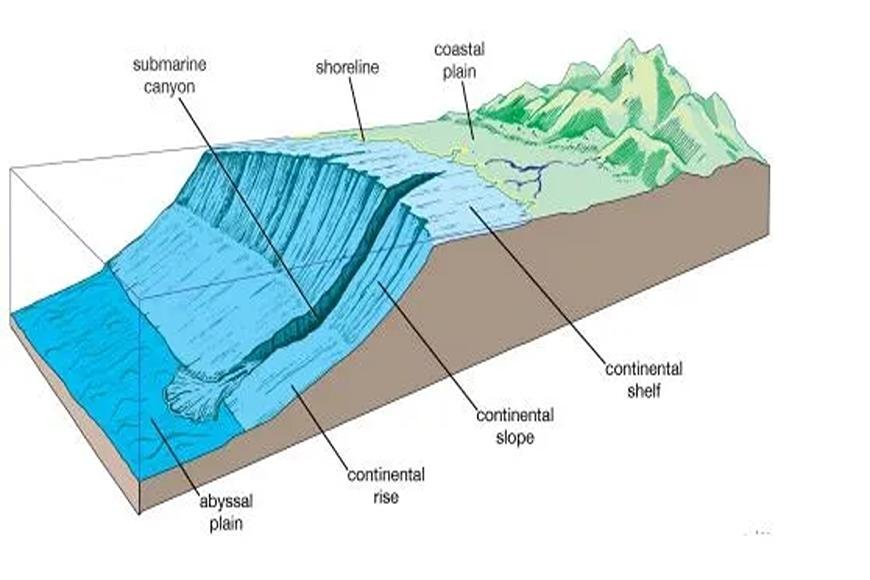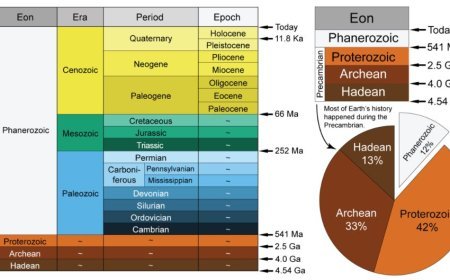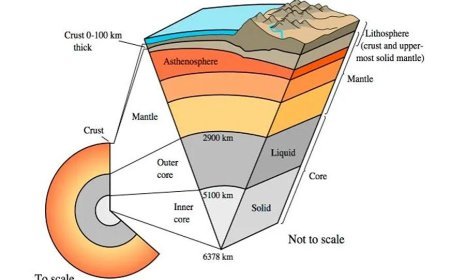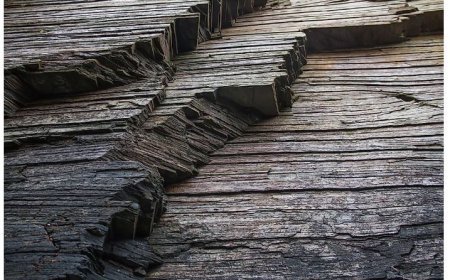SUBMARINE CANYON
Submarine Canyons: Deep-sea valleys carved by currents, shaping ocean floor landscapes.

Submarine Canyons
- Submarine canyons are a type of narrow valley with steep sides that cut into the sides and hills of tectonic plates. On the continental shelf or the hills of a landmass, submarine canyons form.
- They don't happen very often on the edges of continental plates where there are steep hills or cliffs.
- The name of the area comes from the names of the valleys that rivers have made on land.
- Deep-sea pits are formed when one tectonic plate slides under another.
- Undersea canyons, on the other hand, are found along the edges of most continental plates.
- Rivers that cut across continental shelves, slopes, and hills create them by washing sands down. After that, the sands are dumped on the abyssal lands.
Submarine Canyon Characteristics
- It's more likely for submarine canyons to form on the steep sides of active margins than on the softer sides of inactive margins.
- They show wear on all types of surfaces, from sand that hasn't formed a shell to crystalline rock.
- When it comes to gorges, those on active continental margins are steeper, shorter, denser, and closer together than those on inactive continental margins.
- The walls are often very steep and can get very close to being vertical. Bioerosion and sinking are possible with these walls.
- There are about 9,477 underwater canyons in the world, which make up about 11% of the mainland slope.
Submarine Canyon Types
- Weathering, sediment, and living things all worked together to create these features in the ocean.
- Most of the time, they are found at higher levels because they result from diastrophic traits.
- In general, there are three kinds of underwater canyons:
1. Bank
- A bank is a flat-topped hill that is usually found on the edges of continents.
- The main things that lead to banks being formed are erosion and depositing money.
- The bank has a small layer of water on top of it, but the depth is good enough for passage. These places are good for fishing.
- Such as the Grand Banks in the North Atlantic and the Dogger Bank in the North Sea.
2. The Shoal
- A shoal is a buildup of sand or gravel in a river waterway or on the continental coast that can be dangerous for ships.
- Most of the time, less than 10 m (33 feet) below water level at low tide is thought to be the continental shelf.
3. Reef
- Coral reefs are ridges or bumps in the ocean that are made up of algae and limestone shells, usually coral polyps.
- It is possible for a coral reef to turn into a fixed coral island.
- A lot of different kinds of animals live in coral reefs, which are sometimes called "rainforests of the sea."
- The Pacific Ocean is known for its coral reefs, which are found near seamounts and guyots.
What's Your Reaction?



































